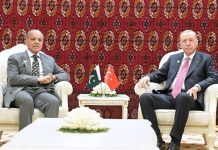By Asghar Ali Mubarak
ISLAMABAD: Pakistan on Thursday began its hectic lobbying to secure rollover of loan deposits worth $4 billion from the Kingdom of Saudi Arabia and the United Arab Emirates scheduled to mature November-February period of the current fiscal year.
According to the publication, the PTI government has no option but to seek rollover for another year to avoid dwindling of foreign exchange reserves, under the IMF programme as it could not afford to pay back the outstanding loans upon its maturity at this stage. A top official of the Finance Ministry confirmed that the two countries are ready to roll over the outstanding loans. “Yes, InshaAllah,” he said.
The loan: Saudi Arabia provided the first $1 billion deposit in November 2019, the second in December 2019, and the third tranche of $1 billion in January 2020. Earlier this year, Pakistan returned $1 billion while $2 billion are still lying with the State Bank of Pakistan.
On the other hand, the UAE provided a $2 billion loan deposit in January and February 2020. These loans would mature at the beginning of the next calendar year.
Rollover: Pakistan would also have to seek rollover from China. In total, the country would seek a total of $7 billion from three countries – $3 billion from China, and $2 billion from Saudi and UAE each.
Pakistan’s foreign currency reserves held by the State Bank of Pakistan (SBP) stood at $12.121 billion till October 23, 2020 and a major chunk of reserves consists of outstanding loans. IMF bailout: Pakistan and the IMF had struck $6 billion under Extended Fund Facility (EFF) and this programme had agreed to external financing of rollover of loans from KSA, UAE, and China for three years period. So any deviation from this arrangement could aggravate difficulties for both sides for making arrangements on account of the external front. The IMF had projected gross external financing requirement to the tune of $29 billion for the ongoing financial year but the independent economists did not agree with this figure.



